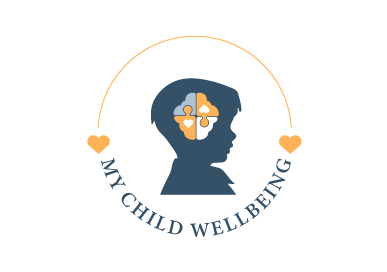
What are the Different Developmental Stages of Adolescence? Ultimate Guide!!

What are the different developmental stages of adolescence? This is a question that many adolescents and parents may ask themselves. There are three main stages of adolescence:
- Early Adolescence (10 – 13 years old).
- Middle Adolescence (14 – 17 years old).
- Late Adolescence (18 – 21 years old).
Adolescence is a time of change and growth. For teenagers, it can be a confusing and challenging time as they navigate through different developmental stages. There are different stages of development that adolescents go through. Understanding these stages can help adolescents navigate through this time of life more successfully. If you want understand the different aspects of adolescence as a parent or if you want to help your early adolescent understand this stage of development, you can seek guidance from the following books as well:
- Adolescence.
- Adolescence.
- Childhood and Adolescence: Voyages in Development.
- Preparing for Adolescence: A Planning Guide for Parents.
Early Stage of Adolescence!
Early stage of adolescence is a very important stage of adolescence. Understanding this stage is the first step to answer what are the different developmental stages of adolescence!
Physical changes in early adolescence
Puberty changes are the main developmental changes of early adolescents. Puberty is a time of great change for young people. For girls, puberty typically begins between the ages of 10 and 14. Boys usually begin puberty a little later than girls. Mostly, boys experience it between the ages of 12 and 16.
- For girls, the most noticeable change is the development of breasts.
- Girls may also experience a growth spurt, and their hips will become wider.
- They will also start to develop body hair, including under their arms and on their legs.
For boys, the physical development occurs as follows:
- Development of muscles and the deepening of their voice.
- Boys will also experience a growth spurt and will start to develop facial and body hair.
- They will also experience enlargement of testes and penis.
- Boys will also begin to produce sperm.

These changes can be both exciting and daunting for young people. It is important to remember that everyone experiences puberty at different rates and in different ways. So there is no right or wrong way to go through it. If you have any questions or concerns about your own body, it is always best to talk to a trusted adult.
Cognitive changes in early adolescence
Cognitive changes in this stage can have a big impact on how young people grow and develop during this stage of their lives. These changes can be both positive and negative. They can affect different aspects of their lives such as adolescent health.
- Girls tend to become more capable of abstract thinking and forming hypotheses during early adolescence.
- They also become better at deductive reasoning, which means they can figure out how things work by understanding the principles that underlie them.
- Girls in early adolescence are also better able to see multiple sides to an issue or problem, which can make them better problem-solvers.
However, early adolescents can also become more impulsive and emotional during this time. They may seek out risky behaviors as they assert their independence and try to find their place in the world. These changes in cognitive development can lead to both positive and negative outcomes in early adolescence.
Boys also go through changes during early adolescence, though they tend to be different from the changes girls experience.
- Boys become better at hand-eye coordination and spatial reasoning, which can help them with activities like sports and building things.
- They also become more capable of abstract thinking and forming hypotheses, just like girls.
- However, boys are more likely than girls to become impulsive and reckless during early adolescence, which can lead to negative consequences.
Social-Emotional changes in early adolescence
Early adolescence is a time of significant social and emotional change for both girls and boys. For girls, this period is marked by an increased focus on relationships and appearance, as well as greater pressure to conform to societal expectations. Boys, on the other hand, often experience increased pressure to perform academically and athletically and may feel more isolated from their peers.

Both girls and boys undergo physical changes during early adolescence which can contribute to feelings of confusion and insecurity. It is important for parents to be aware of the social-emotional changes that occur during early adolescence, so they can provide support and guidance to children during this challenging time.
Middle Stage of Adolescence!
If you are looking for an answer about what are the different developmental stages of adolescence, then this stage is a must to include.
Physical development in middle stage of adolescence
Physical development during middle adolescence is different for boys and girls.
- Boys typically experience a growth spurt and their muscles will become more developed.
- Girls, on the other hand, will typically experience a growth spurt too. Their bodies will also start to change shape as they begin to store more fat in their hips and thighs.
- Both boys and girls will experience changes in their skin as they go through puberty, with girls often developing pimples and boys often developing body odor.

As teenagers’ bodies change, they may also start to feel more self-conscious about their appearance. That is why, middle adolescence focus on this aspect of appearance quite critically. You can see many teenagers of 14 to 17 years old who are greatly conscious about how they look.
Cognitive development in middle adolescence
Middle adolescence is a time of significant cognitive change for both girls and boys. Piaget’s theory of cognitive development suggests that during this period, adolescents undergo a shift from concrete, “black-and-white” thinking to more abstract, “gray area” thinking. In other words, middle adolescents are able to see that there may be more than one right answer to a problem, and that different people may see things in different ways.
This shift in thinking can be seen in the way adolescents approach schoolwork. In middle school, many students move from relying on memorization and repetition. They start to work more on understanding concepts and solving problems. They also become more critical of what they read and hear, and are more likely to question authority.
These cognitive changes have important implications for how middle adolescents interact with the world around them. For example, they may be more likely to engage in risky behaviors, such as trying drugs or alcohol, because they don’t believe that there are absolutes when it comes to right and wrong. They may also be more likely to challenge rules and authority figures, such as parents and teachers.
It’s important to remember that not all adolescents will go through these cognitive changes similarly. Some may start to think more abstractly much earlier than others, while some may never reach this level of thinking. There is no right or wrong way to go through adolescence, and each person will experience it in their own unique way.
Social-Emotional changes in middle adolescence
Middle adolescence is a time of great change for both girls and boys. As they enter into this stage of development, they experience social and emotional changes that can be quite profound.
For girls, social-emotional changes typically involve becoming more interested in relationships and developing closer friendships. They may also become more self-conscious and feel a need to fit in with their peers. As they navigate these changes, girls may become moody or withdrawn.
For boys, social-emotional changes often involve a greater interest in girls and dating. Romantic and sexual relationships become important. They may also become more competitive and assertive with their friends. Like girls, boys may also experience moodiness and withdraw during this time.
Late Stage of Adolescence!
Just like other stages, late stage of adolescence is also quite important. It is a transition from adolescence to adulthood. A teenager becomes a young adult. So, parents need to understand it to answer what are the different developmental stages of adolescence.
Physical development in late stage of adolescence
As adolescents approach late adolescence, they experience a number of physical changes.
- Girls tend to grow taller and develop wider hips.
- Boys’ shoulders become broader and their muscles more defined.

Both sexes also see an increase in the production of sex hormones, which can lead to sexual maturity, sexual identity and the development of secondary sex characteristics.
- For girls, this may include the start of menstruation and breast development.
- Boys may experience a deepening of the voice, an increase in body hair, and enlargement of the testes.
Many adolescents also go through a growth spurt during this time, which can result in them becoming taller or shorter than their parents. Finally, late adolescence is also when young people typically reach their full adult height.
Cognitive changes in late adolescence
Cognitive changes in late adolescence can be both dramatic and subtle.
- For girls, most noticeable changes may include an increased ability to reason and think abstractly.
- They also develop an improved ability to communicate verbally.
- Girls also typically become better at multitasking and problem solving.
Boys undergo many of the same cognitive changes as girls.
- Boys often lag behind slightly in terms of verbal ability and communication.
- They typically excel in areas such as math and spatial skills.
In general, the brain undergoes a great deal of change during late adolescence. Teenagers slowly become adults. These changes can be both exciting and challenging. With the right supports in place most teenagers handle these changes remarkably well.
Social-Emotional changes in late adolescence
Late adolescence is a time of great change for both boys and girls. Physically, they are becoming adults; mentally, they are starting to think about their future; and emotionally, they are starting to understand and experience more complex emotions.
For girls, social-emotional changes during this time include becoming more interested in relationships and feeling more connected to others. Sexual development is involved. They also start to think more about their future and what they want to do with their lives. Additionally, girls may become more aware of how they are perceived by others and start to care more about their own appearance.
For boys, social-emotional changes during this time include a greater focus on independence and becoming more self-sufficient. They also start to think more about their future and what they want to do with their lives. Additionally, boys may become more aggressive and competitive, and start to value toughness and strength more than in the past.
Both boys and girls undergo a lot of changes during late adolescence, but the social-emotional changes are unique for each gender. By understanding these changes, we can better support adolescents as they transition into adulthood.
Role of Parents in Different Developmental Stages of Adolescence!!
There’s no question that parents play a critical role in helping their adolescents navigate through different developmental stages. But what specific things can parents do to facilitate success during each stage?
In the early years, parents should provide a strong and supportive foundation for their children to build upon. This means being there for them emotionally, setting reasonable rules and expectations, and modelling positive behavior.
As kids get older, parents should gradually give them more independence while still remaining involved in their lives. This may include trusting them to make their own decisions, helping them develop their interests and talents, and allowing them to experience new things.
Conclusion!!!
In conclusion, the answer about what are the different developmental stages of adolescence is that there are different developmental stages of adolescence. Each stage is important in its own way. The early adolescence is a time of exploration and learning. Middle adolescence is a time when many adolescents begin to experiment with risky behaviors. The late adolescent years are a time of consolidation.
We would be very happy to hear from you on the comments sections of our Facebook page. You can also visit our Quora page. Feel free to leave your comments and queries!




























